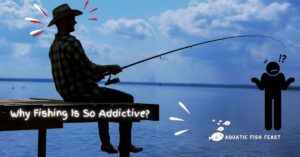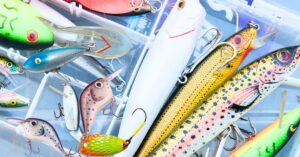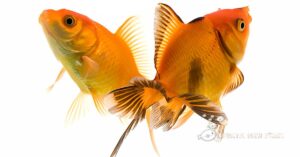Would you be interested in learning the difference between fish farming and fishery?
A location where fish are collected is sometimes occasionally called a “fishery.” An aquaculture location where fish are bred for sale or consumption is called a “fish farm.”
Fisheries and aquaculture are closely linked fields, with no distinction between them.
Fish and aquatic product production and trade are the focus of both aquaculture and fisheries.
Even though there are many parallels between aquaculture and fisheries, there are also some distinctions.
Fish and shellfish are the focus of the fishing industry.
Fishing is their primary business, and they also process and sell fish. Aquaculture, on the other hand, is associated with raising aquatic plants and animals.
“fish farming,” or aquaculture, refers to the naturally occurring or managed raising of fish, shellfish, and seaweed in freshwater and marine habitats.
Fishing is an activity that results in fish harvesting. Fish raised through aquaculture or wild fish catch may be involved.
It is commonly described as “individuals participating, fish species or type, area of water or seabed, fishing technique, boat class, purpose of the activities, or a combination of the previous features.”
Table of Contents
What are the types of fishery
A fishery is an endeavor that results in the collection of fish.
Fish raised through aquaculture or wild fish catch may be involved. It is categorized according to the individuals participating, the kind of fish, the region of water or seabed, the fishing technique, the kind of boat, the goal, etc.
The sorts of fisheries are as follows:
Industrial fisheries
Highly mechanized, capital-intensive fisheries often employ large vessels with cutting-edge fish detection and navigation technology.
These fisheries often yield a comparatively high catch per unit effort and production capacity. Some parts of the globe, such as the North Sea trawl fishery for sand eel or the Peruvian ours-seine fishery for anchoveta, equate “industrial fisheries” with fisheries for species utilized to reduce fishmeal and fish oil.
small-scale fishing
This kind of fishing is labor-intensive, requiring minimal money and equipment per person on board, tiny boats, if any.
They belong to a family. It may be used for business or subsistence and typically uses little fuel.
Handcrafted fishing
Traditionally, fishing households—as opposed to commercial companies—use tiny fishing vessels and very little cash to conduct short, close-to-shore fishing expeditions primarily for local use.
In reality, definitions differ between nations; for example, in impoverished developing nations, they may refer to hand collection on the beach or a single-person canoe, while in wealthy nations, they may refer to trawlers, seiners, or long-liners that are longer than 20 meters.
Commercial or subsistence artisanal fisheries that produce goods for export or local use are also possible.
Generally speaking, though not always, small-scale fisheries employing comparatively low-tech equipment are referred to as such.
Both industrial and artisanal fishers often target conflict-prone resources.
Commercial fisheries
fishing operations carried out for financial gain to sell the harvest on the open market through direct contracts, auction houses, or other trading channels.
Fisheries for subsistence
a fishery where the fish are shared and eaten by the fishermen’s family and relatives directly, as opposed to being purchased by intermediaries and sold at the next bigger market.
Pure subsistence fishing is uncommon as some products are frequently traded or sold for other items or services.
What is the classification of fisheries
There are two categories for fisheries.
1. Finfisheries
2. Fishing that isn’t fin.
True fish are the subject of fin fisheries, while species other than fish, such as prawns, crabs, lobsters, mussels, oysters, sea cucumbers, frogs, and seaweeds, are the subject of non-fin fisheries.
There are two more categories for fin fisheries.
1. Take fisheries captive
2. Fisheries culture.
The exploitation of aquatic creatures without seed supply is known as capture fisheries. Naturally, the species will repopulate.
This is done in rivers, reservoirs, the sea, etc. Fish productivity in capture fisheries steadily declines because fish, especially brooders and youngsters, are caught without discrimination.
Fish populations are destroyed by overfishing.
Environmental conditions, including pollution, influence fish yield. Both desirable and undesired kinds are included in the captures.
Culture fisheries involves carefully selecting and growing certain fish in small spaces to maximize productivity.
After the seed is stocked, the crop is collected after it has been nurtured and raised in restricted waters.
Fish are cultivated in fertilized ponds with additional feed for the highest possible production.
Considerable focus is being placed on culture fisheries to address the issues with capture fisheries and boost productivity.
Freshwater, brackish, and ocean waters are used for culture fisheries.
Culturing a broad range of aquatic creatures, including prawns, crabs, mollusks, frogs, sea weeds, etc., has come under the purview of culture fisheries with the invention and growth of novel culture systems.
cultivation fisheries are sometimes called aquaculture since they added the cultivation of a wide range of aquatic species.
Fish are Animalia kingdom members categorized under the Vertebrata Subphylum and the Chordata Phylum.
To be classified as members of the Chordata, fish must possess a notochord, paired gills, segmentation of the body parts, a post-anal tail, a ventral heart, and an endoskeleton.
It needs a backbone to qualify as a vertebrate. The spinal cord is supported and shielded by this backbone.
What is an example of a fishery
The fisheries for salmon in Alaska, cod in the Lofton Islands, tuna in the Eastern Pacific, and shrimp farms in China are a few examples.
Three basic categories apply to capture fisheries: industrial, small-scale/artisanal, and recreational.
The classic illustration of the tragedy of the commons—when resource access is unrestricted, and property rights are insufficient—comes from the fishing industry.
Since most fish species are migratory, creating and defending rights to fish in the sea is challenging, so the law of catch is in effect.
Overuse of the resource is frequently the outcome.
Economists have long maintained that if we “privatized the commons” or established individual private property rights for resources in the common pool, the waste related to this issue might be mitigated.
That process is starting to take place.
Often, the focus of fishing efforts is either a certain ecoregion or a particular species or kind of fish or aquatic animal, and fisheries are often distinguished based on these factors.
The cod fishery outside the Lofoten islands, the tuna fishery in the Eastern Pacific, and the salmon fishery in Alaska are a few examples.
The majority of fisheries are marine in nature, as opposed to freshwater, and are centered close to the shore.
What is the importance of fishery
For current and future generations, fisheries and aquaculture provide an essential source of wholesome food, jobs, leisure, commerce, and economic stability, all contributing to improving rural development.
In the areas of employment—over 41 million people worldwide, the great majority of whom reside in developing nations—food security and nutrition.
Fish is often the least expensive source of animal protein for the impoverished—and trade—a third of fisheries commodities produced in developing nations are exported—small-scale fisheries and aquaculture have a vital role in developing these sectors.
As most catch fisheries globally are deemed completely or excessively fished, aquaculture will play a pivotal role in satisfying the growing demand for fish, which population expansion, increased incomes, and escalating urbanization will fuel.
However, governments will need to control aquaculture’s possible ecological and social effects as it grows.
Aquaculture in Africa has expanded far more slowly than in other places and confronts several obstacles, including disputes over resources and difficulty obtaining financing, high-quality seed and feed, and information.
Reducing fish losses through postharvest processing enhancements will also be essential to fulfilling the increasing demand.
Productive, sustainable fisheries and aquaculture enhance the security of our food supply and nutrition, boost livelihoods and income, foster economic expansion, and safeguard the environment and natural resources.
It has been demonstrated that trade in fisheries products on a global scale improves food security in many developing nations by promoting higher production, creating foreign exchange that can be utilized to purchase food, and strengthening the trade-based rights of those who fish and fish-related industries.
What is the importance of freshwater fisheries
However, the fact is that freshwater fisheries are important to feeding millions of people throughout the world. According to recent research release in the Proceedings of the National Academy of Sciences, freshwater fisheries management is connected to food security and biodiversity conservation.
Over 200 million people worldwide receive the equivalent of all animal protein and critical elements from freshwater fisheries.
Additionally, they support the employment of nearly 60 million individuals, most of whom are women.
Because most people who rely on freshwater fisheries are also among the most vulnerable and impoverished, there may be few choices if
Protecting freshwater fisheries contributes to conservation, climate adaptation and mitigation, health and well-being, food security, and poverty reduction through natural means.
While concurrently raising freshwater fisheries within global food, water, and energy agendas, Conservation International is collaborating with local people to identify long-term solutions for maintaining freshwater fisheries in some of the most biodiverse systems on Earth.
Developing nations are home to around 94% of all freshwater fisheries (FAO, 2007).
Millions of the world’s poorest people rely on them for food and a living, and they also boost global economic prosperity through tourism, recreation, and the export of commodities (WorldFish Center, 2002).
An estimated 55.3 million people in the Mekong River basin alone rely on freshwater fish for their diet and means of subsistence; their annual average fish intake is 56.6 kg (Baran et al., 2007).
According to estimates, freshwater fish account for more than 6% of the global yearly supply of animal protein used by humans (FAO, 2007).
Freshwater fish account for 50% of the animal protein consumed in Bangladesh, Indonesia, and the Philippines but only 40% in Thailand and Vietnam.
For low-income households, it is the main and sometimes the sole source of animal protein (Briones et al., 2004).
What is the importance of fisheries to the economy
In addition to facilitating internal and international trade, fisheries help the nation generate foreign cash.
Additionally, the industry generates extra economic prospects by supporting other businesses like fish processing and marketing.
The fishing sector’s contribution to the GDP (3%), employment (5%), and percentage of export profits (11%) are typically used to sum up its significance.
Despite being relatively tiny in comparison, the fishing industry is significant because:
Fish provide for 7% of the overall protein supply and 80% of animal protein intake, making them the primary source of protein for animals.
Over the past ten years, fisheries exports have grown by almost 15% annually, and fishery goods currently rank fourth among all export commodities, after clothing, jute, and leather.
Ninety percent of these exports are shrimp.
Among the poorest groups in society are fishermen.
Over the past 15 years, the number of full-time, mostly landless fishermen has climbed by around 3% annually (1.27 million in 1990).
Furthermore, approximately 11 million people receive part-time employment from fisheries through subsistence fishing, which peaks during the June to October flood seasons.
As well as related activities like net manufacturing, processing, marketing, seed collection and distribution, and other ancillary jobs.
Fish is a valuable food resource from an economic standpoint.
In addition to being an important source of protein, vitamins, and minerals for human growth and development, it creates work for fishermen, traders, and dealers.
Additionally, fish benefits the global food chain by being a basic food in many impoverished nations and a healthful luxury cuisine in affluent nations.
Furthermore, fish exports have grown to be a substantial source of foreign cash for poor nations, underscoring the necessity of managing fisheries sustainably.
Conclusion
Fish are produced, reared, and collected for commercial reasons in a controlled setting called a fish farm, also called aquaculture.
This can happen in natural water basins, ponds, or tank enclosures.
On the other hand, a fishery is a business or profession that involves obtaining, preparing, and marketing fish from natural environments like lakes, rivers, and seas.
Fish farms are essentially controlled areas where fish are raised, whereas fisheries include capturing fish in their natural habitats.
Numerous choices are available in aquaculture. It might be on a local or huge scale. It may be done in fresh, brackish, or salty settings and on land.
It may be used for various cultural species with various economic values using extensive, semi-intensive, or intense approaches.
Its goods can be marketed in both domestic and foreign markets, either unprocessed or processed.
For many LDCs that have access to interior and coastal fish resources, fishing can significantly increase development, employment, and food security.
Fishing increases export competitiveness and aids in diversification initiatives, so long as the supply-side and demand-side issues faced by the LDC fishing industry are successfully resolved.
Six LDCs—Malaysia, Bangladesh, Cambodia, Uganda, Tanzania, and the Democratic Republic of the Congo—were among the top 16 producers of inland waters captured between 2003 and 2012, listed in decreasing order by capture size (FAO, 2016).
During the same period, Myanmar was also one of the top 10 producers of marine captures. Despite this potential, the LDCs’ part of the world’s fisheries exports is still quite small compared to other developing nations whose shares have significantly expanded.
Other Articles:
Can Fish Communicate With Other Fish
What Lures To Use For Trout
How To Attract Fish When Fishing With Bait




